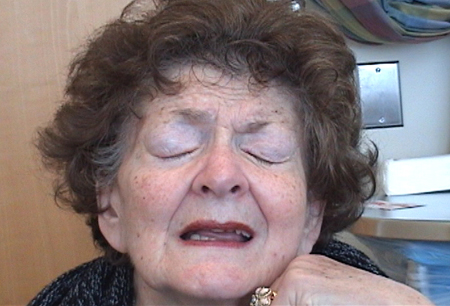Summary
Definition
History and exam
Key diagnostic factors
- presence of risk factors
- simultaneous contraction of agonist and antagonist muscles
- muscle pain
- appearance or worsening of dystonia with action
- blepharospasm
- cervical torticollis
- hand spasms
- foot spasms
- acute presentation (within 5 days of exposure to antidopaminergic agent)
- acute worsening of pre-existing generalised dystonia
Other diagnostic factors
- twisting of the affected body part
- geste antagoniste (sensory trick)
- spread to another body part
- parkinsonism
- myoclonus
- tremor, weakness, or spasticity
- Kayser-Fleischer rings on slit-lamp examination
Risk factors
- family history of dystonia
- repetitive activity of affected region
- birth injury and delayed development in childhood
- exposure to antidopaminergic agents
- trauma
- genetic mutation
- Ashkenazi Jewish ethnicity
- structural lesion of the basal ganglia
- parkinsonian syndrome
Diagnostic investigations
Investigations to consider
- cranial magnetic resonance imaging
- serum ceruloplasmin
- 24-hour urine copper
- TOR1A (also known as DYT1) gene testing
- GCH1 gene testing
Treatment algorithm
Contributors
Authors
Ludy C. Shih, MD, MMSc
Associate Professor of Neurology
Department of Neurology
Boston University School of Medicine
Boston
MA
Disclosures
LCS has been reimbursed by Medtronic, Praxis Precision Medicines, and WCG-Medavante for consulting services. LCS has received research grant funding from the National Institutes of Health, Abbott, and Praxis Precision Medicines.
Acknowledgements
Dr Ludy C. Shih would like to gratefully acknowledge Dr Samuel Frank, Dr David K. Simon, and Dr Daniel Tarsy, previous contributors to this topic.
Disclosures
SF is employed by the Beth Israel Deaconess Medical Center, which has received funding from Allergan to support partial fellowship training. DKS has received consulting fees from the Gerson Lehrman Group. DKS is an author of a reference cited in this topic. DT has received an unrestricted grant from Allergan and Medtronic being used for education. He received unrestricted funds for patient education from Allergan, Boehringer Ingelheim, Valeant, and Teva Neurosciences. He has received research funds from Solvay and Neurogen. DT is an author of a number of references cited in this topic.
Peer reviewers
Patricia Dowsey Limousin, MD, PhD
Reader in Clinical Neurology
Honorary Consultant
Institute of Neurology
National Hospital for Neurology and Neurosurgery
London
UK
Disclosures
PDL declares that she has no competing interests.
Zhigoa Huang, MD, PhD
Assistant Professor
Director
Movement Disorder Center
Dept of Neurology
University of Florida
Tampa
FL
Disclosures
ZH has been a consultant for Allergan and a speaker for Novartis and TEVA.
Use of this content is subject to our disclaimer
